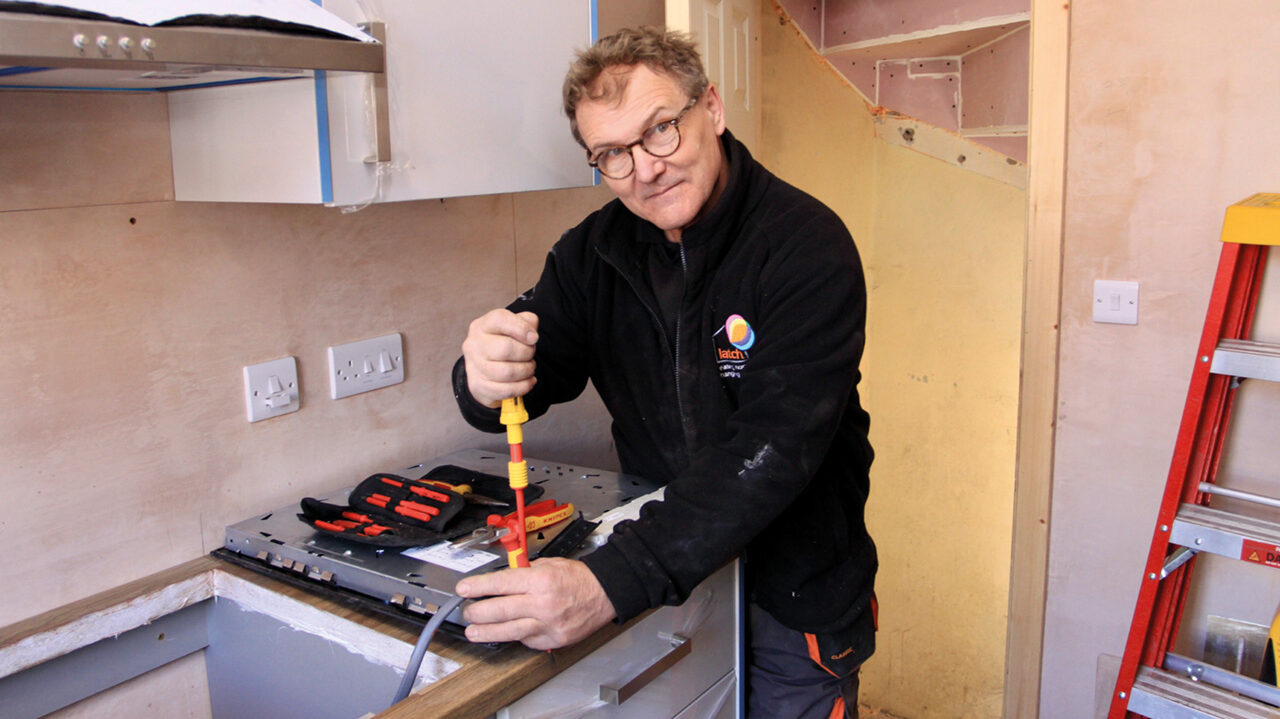Latch tools up for empty homes
Refurbished houses are let to people experiencing homelessness
Thousands of houses stand empty despite a growing homelessness problem. In Leeds, a charity that addresses this scandal through buying and renovating vacant properties – many of them derelict – has just completed its 100th refurbishment specifically for people experiencing homelessness.
There are over 3,000 long term empty homes in the city, some unoccupied for over 20 years, while around 5,000 people are registered on the city council’s priority A housing list. Thousands more are at risk of homelessness.
This picture is repeated in every UK city. In Sheffield, for example, around 5,000 houses stand empty. In Liverpool the figure is 4,500; in Hull it’s almost 4,000. In Bradford around 1,300 properties have stood empty for two or more years. Across the whole of Greater Manchester a survey found in excess of 19,000 vacant houses.
In Leeds the problem is being tackled by the housing charity Leeds Action to Create Homes (LATCH). For over 20 years it has been refurbishing derelict and rundown houses in the city’s Chapeltown, Harehills and Burley areas, and letting them to people experiencing homelessness.
LATCH’s latest renovation is a two-bedroomed mid-terrace back-to-back in the densely populated red-brick Victorian streets of Harehills. Back-to-backs were the most basic form of cheap housing, each sharing its back wall with a house in the next street. In the 1970s there were still 78,000 back-to-backs in Leeds, around 72 per cent of the city’s entire housing stock, but many have been demolished. Harehills has one of the biggest remaining concentrations.
The house’s last occupants were an elderly couple, and the interior had seen few if any changes in half a century. There was no central heating, just a gas fire and immersion boiler, while the kitchen and bathroom fixtures were too dated to restore. A particularly challenging problem was what the project manager Joe Brown described as “severe Artex, everywhere”. Artex is a surface coating once popular with interior decorators because it disguised cracks or uneven surfaces on walls and ceilings. It is notoriously hard to remove.
After the house had been empty for almost a year the LATCH team began work in January, stripping away all interior fittings. It was then rewired, replumbed and insulated, given new doors and windows, new kitchen and bathroom, and provided with central heating.
Brown has worked with LATCH for almost 10 years and seen over 50 empty properties made habitable. “What I really love about LATCH is our ethos of making sure the homes are renovated to a really good quality. There is no reason why social housing should be of a lower standard than private properties.”
Most renovation work is done by the charity’s own employees, with help from volunteers and some trainees. Part of its mission is to give unemployed people skills like joinery, plastering, painting and decorating.
LATCH’s relationship with tenants is not simply that of landlord. When the keys are handed over, tenants often require assistance to make a fresh start and are provided with everything from furniture, pots and pans to cutlery and curtains. The charity’s support team even offers help with things like hobbies and meditation classes.
Chief executive James Hartley joined the charity back in 1998 when it had renovated just 17 houses. Last week he told Big Issue North it was becoming progressively more challenging to acquire new properties.
“Back in the day we could buy one for around £20,000 or £30,000, but we now have to find £70,000 or £80,000 for each unit and then up to £30,000 for the refurbishment work,” he said. “We would like to scale up our work, because we know the properties are there and the need is there, but there’s stiff competition with the private sector to buy suitable houses.”
LATCH’s offers are often rejected even when ten per cent above the value of the property at the sealed bids stage. There is anecdotal evidence that some buy-to-let landlords snap them up but spend much less on the renovation work and charge higher rents.
While LATCH can secure loan finance against the assets of its existing property, an important source of funding is Leeds City Council’s Right to Buy Grant Funding Programme, which uses receipts from the sale of council houses, something councils have been legally obliged to do since Margaret Thatcher’s Housing Act of 1980.
“No one really approves of selling the houses,” said Brown.
“But we make the best of the situation by using grants from that programme, which can be 40 per cent of the capital cost of a house and its renovation.
“Although the renovated properties remain under LATCH control, part of the funding agreement with the council is that it has nomination rights for a property, ensuring it’s let to someone on the council’s priority A housing list. In a sense, you could say we are replacing units that were lost under the Right to Buy legislation.”
Other funding comes from a mixture of smaller grant sources. These include two national property charities – LandAid, which has special emphasis on housing people experiencing homelessness between the ages of 18 and 25, and the Clothworkers’ Foundation, which awards grants towards purchases, renovations and fixtures and fittings.

Leave a reply
Your email address will not be published.